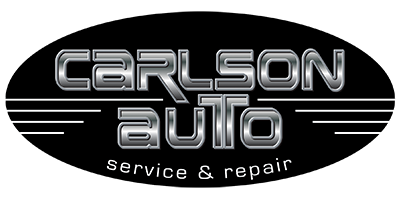
Read Our Blog
Spring Care for your Car so it is Always in the Best Condition
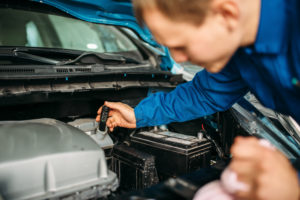 As winter bids farewell and warmer days beckon, it’s time to transition your focus from snow and ice to sun and road trips. However, before you embark on your spring adventures, it’s essential to give your vehicle the attention it needs after enduring the harsh winter conditions. Here’s your essential guide to post-winter vehicle care.
As winter bids farewell and warmer days beckon, it’s time to transition your focus from snow and ice to sun and road trips. However, before you embark on your spring adventures, it’s essential to give your vehicle the attention it needs after enduring the harsh winter conditions. Here’s your essential guide to post-winter vehicle care.
Roads can Cause issues to your Car
Remember, winter roads are often treated with salt and de-icing chemicals, which can wreak havoc on your car’s paint and undercarriage. Begin by giving your vehicle a complete wash, paying close attention to areas where salt tends to accumulate, such as the wheel wells and undercarriage. Don’t forget to clean the windshield and wiper blades to ensure clear visibility. Consider applying a protective wax coating to shield your paint from UV rays and further damage. Additionally, inspect for any signs of rust or corrosion, addressing them promptly to prevent further deterioration.
Check the Fluid levels and Oil as well
Once you’ve spruced up the exterior, it’s time to turn your attention to the mechanical aspects of your vehicle. Begin by checking fluid levels, including engine oil, coolant, brake fluid, and windshield washer fluid. Cold temperatures can cause fluids to deplete faster, so be sure to top them off as needed. Inspect the brakes, tires, and suspension for any signs of wear and tear caused by winter driving conditions. Adjust tire pressure to the recommended levels, as cold weather can lead to deflation. Consider rotating your tires to ensure even wear. Don’t forget to have your battery tested, as winter cold can put a strain on it, potentially leading to decreased performance or failure. Address any issues promptly to avoid being stranded unexpectedly.
Remove any winter debris and clutter, vacuum carpets and upholstery to remove dirt and salt residue, and clean and condition leather seats to prevent drying and cracking. Check the functionality of all interior components, such as heating and air conditioning systems, lights, and electronics. Address any malfunctions promptly to ensure a comfortable and safe driving experience. By following this essential post-winter vehicle care guide, you’ll not only restore your car’s appearance but also ensure its reliability and performance for the seasons ahead. Taking these steps now will help prolong the life of your vehicle and enhance your driving experience in the months to come.
Windshield Wiper Issues to be Aware of
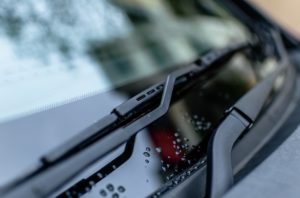 Your vehicle’s windshield wipers are a critical component for maintaining clear visibility while driving, especially during adverse weather conditions. Over time, however, wiper blades can deteriorate, leading to reduced effectiveness and potentially compromising safety on the road. Recognizing the signs of poor windshield wipers is essential for ensuring optimal visibility and safe driving.
Your vehicle’s windshield wipers are a critical component for maintaining clear visibility while driving, especially during adverse weather conditions. Over time, however, wiper blades can deteriorate, leading to reduced effectiveness and potentially compromising safety on the road. Recognizing the signs of poor windshield wipers is essential for ensuring optimal visibility and safe driving.
Noticing how the Windshield Wipers are wearing
One of the most evident indicators of deteriorating wiper blades is streaking or smearing on the windshield when they are in use. If you notice that your wipers leave behind streaks of water or fail to clear the windshield evenly, it’s a clear sign that the blades are no longer making proper contact with the glass. This can occur due to wear and tear on the rubber blade, causing it to lose its flexibility and effectiveness over time. Additionally, if you observe any skipping or chattering noises when the wipers are in operation, it could indicate that the blades are worn, warped, or damaged, resulting in uneven pressure on the windshield.
Damage to the Wipers
Another sign of poor windshield wipers is visible damage to the wiper blades themselves. Take the time to inspect the blades for any signs of cracking, splitting, or fraying along the edges. Damage to the rubber blade can lead to reduced contact with the windshield, resulting in ineffective wiping and decreased visibility. Additionally, check for any signs of corrosion or rust on the wiper arms and hinges, as these can impede the smooth operation of the wipers and cause them to malfunction. If you notice any visible damage to the wiper blades or components, it’s crucial to replace them promptly to ensure clear visibility and safe driving.
Lastly, pay attention to the overall performance of your windshield wipers during adverse weather conditions. If you find that they struggle to clear water, snow, or debris from the windshield, it may be a sign that they are no longer functioning optimally. Poor visibility due to ineffective wiper blades can significantly increase the risk of accidents, especially during heavy rain or snowfall. Therefore, if you experience any of these signs of poor windshield wipers, it’s crucial to replace them with new blades promptly. Regularly inspecting and maintaining your wiper blades will help ensure clear visibility and safe driving in all weather conditions.
Knowing how to Drive on Ice & Snow
 Driving on ice or snow-covered roads demands a cautious approach and a keen understanding of how to navigate safely through challenging conditions. As winter blankets the landscape, it’s crucial to adopt proactive measures and adjust driving techniques to ensure a secure journey. Here are some essential tips to help drivers navigate icy or snowy roads without the need for specialized winter tires.
Driving on ice or snow-covered roads demands a cautious approach and a keen understanding of how to navigate safely through challenging conditions. As winter blankets the landscape, it’s crucial to adopt proactive measures and adjust driving techniques to ensure a secure journey. Here are some essential tips to help drivers navigate icy or snowy roads without the need for specialized winter tires.
Slowing down Your Speed when Driving
Firstly, reducing speed is paramount. Slowing down allows for better control and reaction time, mitigating the risk of skidding or losing traction. It’s advisable to drive well below the posted speed limit, especially on icy surfaces, where stopping distances can be significantly longer. Maintaining a safe distance between vehicles is also critical, providing ample room for braking and maneuvering. Smooth, gradual movements when accelerating, braking, and steering help prevent sudden shifts in traction and reduce the likelihood of losing control.
Maintain Control of your Vehicle
Adjusting driving technique to suit the conditions is essential. When approaching corners or turns, gently brake before entering and maintain a consistent speed through the curve to preserve traction. Abrupt changes in direction or speed can lead to instability on slippery surfaces. In the event of a skid, remain calm and steer in the direction you want to go without overcorrecting. Utilizing lower gears when ascending or descending hills can enhance control and minimize the risk of wheel spin. Vigilance for black ice, which is difficult to detect, is crucial, especially on shaded areas, bridges, and overpasses where it commonly forms.
Preparation and awareness are key components of safe winter driving. Before embarking on a journey, check weather forecasts and road conditions, and if possible, delay travel plans if conditions are severe. Informing someone of your intended route and estimated arrival time is advisable, particularly when traveling through remote or isolated areas. Equipping your vehicle with an emergency kit containing essentials such as blankets, non-perishable food, water, a flashlight, a first aid kit, and a shovel is prudent. Remember, it’s better to err on the side of caution and delay travel or seek alternative routes if conditions are too hazardous. By adhering to these tips and exercising caution, drivers can navigate icy or snowy roads safely and confidently without relying on specialized winter tires.
Regular Inspections of Fluids in your Car
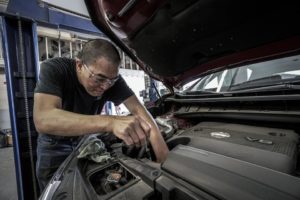 Frequently checking the fluids in your vehicle is a crucial part of routine maintenance that can help keep your car running smoothly and prevent costly repairs down the line. Among the essential fluids to monitor, engine oil tops the list. Engine oil serves as a lubricant for the engine’s moving parts, reducing friction and heat buildup. Checking the oil level regularly using the dipstick is essential, ensuring it falls within the recommended range. Additionally, inspecting the oil’s color and consistency can provide insight into its condition; dark or gritty oil may indicate the need for an oil change to maintain optimal engine performance.
Frequently checking the fluids in your vehicle is a crucial part of routine maintenance that can help keep your car running smoothly and prevent costly repairs down the line. Among the essential fluids to monitor, engine oil tops the list. Engine oil serves as a lubricant for the engine’s moving parts, reducing friction and heat buildup. Checking the oil level regularly using the dipstick is essential, ensuring it falls within the recommended range. Additionally, inspecting the oil’s color and consistency can provide insight into its condition; dark or gritty oil may indicate the need for an oil change to maintain optimal engine performance.
Remember to Check All the Fluids
Another vital fluid to keep an eye on is coolant, also known as antifreeze. Coolant plays a critical role in regulating the engine’s temperature and preventing it from overheating or freezing. Monitoring the coolant level in the reservoir and ensuring it’s at the appropriate level is crucial. Additionally, inspecting the coolant for any signs of contamination, such as rust or discoloration, can help detect potential leaks or the need for a coolant flush and replacement. Proper coolant maintenance is essential for preventing engine overheating, which can cause significant damage and costly repairs if left unchecked.
Transmission Fluid
Transmission fluid is paramount for the smooth operation of the transmission system. Transmission fluid lubricates the transmission’s moving parts, facilitating smooth gear shifts and cooling the system. Checking the transmission fluid level using the dipstick and ensuring it’s within the recommended range is crucial. Similarly, monitoring the fluid’s color and odor can provide valuable insights into its condition; burnt or dark-colored fluid may indicate the need for a transmission fluid change to prevent transmission problems. Neglecting transmission fluid maintenance can lead to transmission issues, such as slipping gears or transmission failure, which can be costly and disruptive. By staying proactive and routinely checking and maintaining these vital fluids, car owners can help ensure their vehicle’s optimal performance and longevity on the road. Remember to consult us if you have any questions.
Winter Affects on Car Batteries
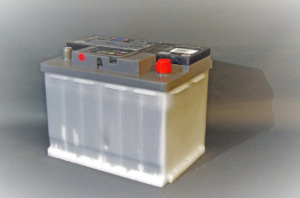 During the winter, car batteries face a multitude of challenges that can significantly affect their performance. One of the primary issues stems from the fact that colder temperatures can drastically reduce a battery’s ability to produce power. Chemical reactions within the battery slow down, making it harder for it to deliver the necessary voltage to start the engine. This decrease in efficiency is particularly problematic for older batteries or those nearing the end of their lifespan, as they are already operating at diminished capacity.
During the winter, car batteries face a multitude of challenges that can significantly affect their performance. One of the primary issues stems from the fact that colder temperatures can drastically reduce a battery’s ability to produce power. Chemical reactions within the battery slow down, making it harder for it to deliver the necessary voltage to start the engine. This decrease in efficiency is particularly problematic for older batteries or those nearing the end of their lifespan, as they are already operating at diminished capacity.
Car Batteries and how Winter Affects them
The increased demand placed on car batteries during winter exacerbates any existing weaknesses or problems. Cold weather necessitates the use of various electrical components in the car, such as heaters, defrosters, and headlights, all of which draw power from the battery. Additionally, shorter days mean that headlights are used for longer periods, further draining the battery. These factors combine to put additional strain on the battery, leading to reduced performance and an increased risk of failure when starting the vehicle. If you notice an issue with the battery, make sure to contact us.
Cold Weather Issues
The winter environment can contribute to the deterioration of the battery itself. Exposure to cold temperatures, along with moisture and road salt, can accelerate corrosion on the battery terminals and cables. Corrosion impedes the flow of electricity, leading to poor connections and reduced efficiency. This buildup of corrosion not only affects the battery’s ability to deliver power but also increases the likelihood of electrical problems in the vehicle. Regular maintenance, such as cleaning battery terminals and ensuring a secure connection, is essential to mitigate these issues and ensure reliable performance throughout the winter months. Overall, understanding the challenges faced by car batteries in winter is crucial for drivers to take proactive measures and avoid unexpected breakdowns during the coldest time of the year.
Clear Snow and Ice off Your Car
 Scraping ice and snow off your vehicle during the winter season is not just a mundane task; it brings a range of significant benefits that contribute to your safety, vehicle performance, and overall well-being. Primarily, maintaining clear visibility is a crucial aspect of safe driving. By diligently removing ice and snow from your car’s windows, mirrors, and lights, you ensure optimal visibility on the road. This is imperative for navigating through winter weather conditions, reducing the risk of accidents caused by impaired visibility. Prioritizing this routine can enhance overall road safety for both you and other motorists.
Scraping ice and snow off your vehicle during the winter season is not just a mundane task; it brings a range of significant benefits that contribute to your safety, vehicle performance, and overall well-being. Primarily, maintaining clear visibility is a crucial aspect of safe driving. By diligently removing ice and snow from your car’s windows, mirrors, and lights, you ensure optimal visibility on the road. This is imperative for navigating through winter weather conditions, reducing the risk of accidents caused by impaired visibility. Prioritizing this routine can enhance overall road safety for both you and other motorists.
Clear off your Car Completely
The act of scraping off ice and snow also extends its positive impact to your vehicle’s functionality. Regular removal of accumulated snow prevents doors and trunks from freezing shut, making it easier to access your car and preventing potential damage. Clearing the roof of your vehicle is equally important, as it prevents the hazard of snow sliding down onto your windshield while driving. This not only avoids sudden visibility issues but also eliminates the need for frequent stops to address obstructed views. In essence, the time invested in scraping proves to be a wise investment, streamlining your daily commute and ensuring that your vehicle operates smoothly even in the harshest winter conditions.
Improve Longevity of Your Vehicle
Beyond the immediate safety and convenience benefits, proactive snow and ice removal contribute to the long-term health and aesthetics of your vehicle. Winter weather, with its salt and freezing temperatures, can accelerate corrosion and damage various parts of your car. By taking the time to scrape off these elements regularly, you protect your vehicle’s paint, handles, and other vulnerable areas. This preventive measure extends the lifespan of your car, preserves its resale value, and saves you from costly repairs down the line. Ultimately, scraping ice and snow off your vehicle is a small yet impactful practice that pays dividends in terms of safety, functionality, and the longevity of your cherished vehicle.
Slick Roads in the Winter means Adjusting Driving Habits
 Winter presents unique challenges for drivers as icy and snow-covered roads become a common occurrence. Navigating slick winter roads requires a combination of preparation, caution, and adaptive driving skills to ensure safety on the road. Start by preparing your vehicle for winter conditions. Invest in quality winter tires, designed to provide better traction on slippery surfaces. Regularly check tire pressure and tread depth, as well-maintained tires are crucial for optimal grip. Ensure that all essential fluids, including windshield washer fluid and antifreeze, are at the recommended levels. Clear all windows, mirrors, and lights of ice and snow before hitting the road to enhance visibility.
Winter presents unique challenges for drivers as icy and snow-covered roads become a common occurrence. Navigating slick winter roads requires a combination of preparation, caution, and adaptive driving skills to ensure safety on the road. Start by preparing your vehicle for winter conditions. Invest in quality winter tires, designed to provide better traction on slippery surfaces. Regularly check tire pressure and tread depth, as well-maintained tires are crucial for optimal grip. Ensure that all essential fluids, including windshield washer fluid and antifreeze, are at the recommended levels. Clear all windows, mirrors, and lights of ice and snow before hitting the road to enhance visibility.
Slow Down if there are Slick Roads
When driving on slick winter roads, it’s crucial to adjust your driving behavior to the challenging conditions. The cardinal rule is to slow down. Reduced speeds allow for better control, increased reaction time, and a lower risk of accidents. Increase your following distance to compensate for the longer braking distances on icy surfaces. Make smooth and gradual movements when accelerating, braking, and steering to avoid skidding. Sudden actions can lead to loss of control, so maintaining a gentle touch on the controls is essential. If your vehicle begins to skid, steer in the direction you want to go and apply the brakes gently to regain stability. Keeping a calm demeanor is paramount; panic can impair decision-making in critical situations.
Be aware of Icy areas on the Roads
Staying informed about weather conditions is crucial for safe winter driving. Check local weather forecasts and road reports before embarking on your journey to anticipate potential challenges. Consider delaying your trip or choosing alternative routes if the weather is severe. Exercise extra caution on bridges, overpasses, and shaded areas, as these locations are more prone to icy patches. Communication is key during winter travel, so inform someone about your plans and ensure your mobile phone is charged in case of emergencies. By combining vehicle preparedness, cautious driving habits, and proactive planning, drivers can confidently navigate slick winter roads, reducing the likelihood of accidents and ensuring a safer winter driving experience for themselves and others on the road.
Winter Weather and Ensuring you Drive Safely
 Driving in winter weather demands a heightened level of attention and preparedness to ensure both your safety and the safety of others on the road. One key tip is to adjust your driving speed according to the conditions. Snow and ice significantly reduce traction, making roads slippery and increasing the risk of accidents. Slowing down allows for better control of your vehicle, giving you more time to react to unexpected situations. It’s crucial to drive below the speed limit in adverse weather conditions and to maintain a safe following distance to prevent collisions, allowing sufficient space for braking on icy surfaces.
Driving in winter weather demands a heightened level of attention and preparedness to ensure both your safety and the safety of others on the road. One key tip is to adjust your driving speed according to the conditions. Snow and ice significantly reduce traction, making roads slippery and increasing the risk of accidents. Slowing down allows for better control of your vehicle, giving you more time to react to unexpected situations. It’s crucial to drive below the speed limit in adverse weather conditions and to maintain a safe following distance to prevent collisions, allowing sufficient space for braking on icy surfaces.
Make sure your Vehicle is Ready for the Winter Weather
Ensuring your vehicle is winter-ready is equally important. Start with the tires, as they are your car’s direct contact with the road. Consider switching to winter tires designed to provide better traction in colder temperatures. Check tire pressure regularly and maintain proper tread depth. Routine vehicle maintenance is essential, focusing on the battery, brakes, lights, and fluids. Cold weather can strain the battery, so ensure it’s in good condition and replace it if needed. Top up windshield washer fluid with a winter-grade solution to prevent freezing, and keep your gas tank at least half full to avoid fuel line freeze-up. Equipping your vehicle with an emergency kit containing essentials like blankets, a flashlight, non-perishable snacks, and a snow shovel adds an extra layer of preparedness for unexpected situations on winter roads.
Adjust some Driving habits
Staying informed about weather conditions is a critical aspect of safe winter driving. Check the weather forecast before embarking on a journey and stay updated on any advisories or warnings. If conditions are severe, consider delaying your trip until the weather improves. Alternatively, explore alternative transportation methods that may be better equipped to handle challenging weather. Another essential tip is to avoid using cruise control on snowy or icy roads. Cruise control can hinder your ability to react quickly to changing road conditions, increasing the risk of accidents. Maintain manual control over your speed and use caution when accelerating or decelerating. Pay particular attention to bridges, overpasses, and shaded areas, as these spots tend to freeze first. Approach these areas with reduced speed and avoid sudden movements to minimize the risk of skidding. By following these tips, you can navigate winter roads more safely and reduce the likelihood of weather-related accidents.
Windshield Wipers and your Vehicle
 Good windshield wipers can help improve your visibility when driving. Clear visibility on the road is a fundamental aspect of safe driving, and the condition of your windshield wipers plays a crucial role in maintaining this visibility, especially during adverse weather conditions. Recognizing the signs of poor windshield wipers is essential for addressing potential safety hazards and ensuring optimal performance. One prominent indicator of wiper issues is streaking on the windshield during operation. If your wipers leave behind streaks or fail to clear the glass adequately, it suggests that the wiper blades are likely worn or damaged, compromising their ability to make effective contact with the windshield. This can significantly impair visibility, particularly in rainy or snowy conditions, increasing the risk of accidents.
Good windshield wipers can help improve your visibility when driving. Clear visibility on the road is a fundamental aspect of safe driving, and the condition of your windshield wipers plays a crucial role in maintaining this visibility, especially during adverse weather conditions. Recognizing the signs of poor windshield wipers is essential for addressing potential safety hazards and ensuring optimal performance. One prominent indicator of wiper issues is streaking on the windshield during operation. If your wipers leave behind streaks or fail to clear the glass adequately, it suggests that the wiper blades are likely worn or damaged, compromising their ability to make effective contact with the windshield. This can significantly impair visibility, particularly in rainy or snowy conditions, increasing the risk of accidents.
Condition of the Windshield Wipers
Another clear sign of deteriorating wiper performance is a skipping or hopping motion as the wipers move across the windshield. This irregular movement is often caused by factors such as bent wiper arms, uneven wear on the blades, or a buildup of dirt and debris on either the blades or the windshield surface. Addressing these issues promptly is essential as skipping wipers not only hinder visibility but can also contribute to potential damage to the windshield over time. Ignoring these signs may lead to more extensive and costly repairs.
Strange Noises you might Notice
Unusual noises, such as squeaking or chattering, during wiper operation are audible signals of wiper blade deterioration. Squeaking typically indicates a lack of lubrication on the wiper blades, while chattering can result from blades losing their shape or uneven pressure from the wiper arms. These noises not only compromise the effectiveness of the wipers in clearing precipitation and debris but can also accelerate wear on both the blades and the windshield. Regular inspection and timely replacement of windshield wipers are essential practices to address these signs of deterioration, ensuring optimal performance and maintaining a clear line of sight for the driver. Prioritizing the maintenance of your windshield wipers is a small yet impactful step towards enhancing overall road safety and preventing potential visibility-related accidents, particularly during adverse weather conditions.
Winter Car Prep You Should Do
Why choose
Carlson auto?
It is easy to schedule an appointment online. Choose a location below and complete the form. We will call you to confirm your appointment. Couldn’t be easier! See you soon.
Cottage Grove
8799 E Point Douglas Rd S
Monday-Thursday: 8AM-6PM
Friday: 8AM-5PM
Maplewood
651-578-0885
275 Century Ave N
Monday-Friday: 8AM-6PM





